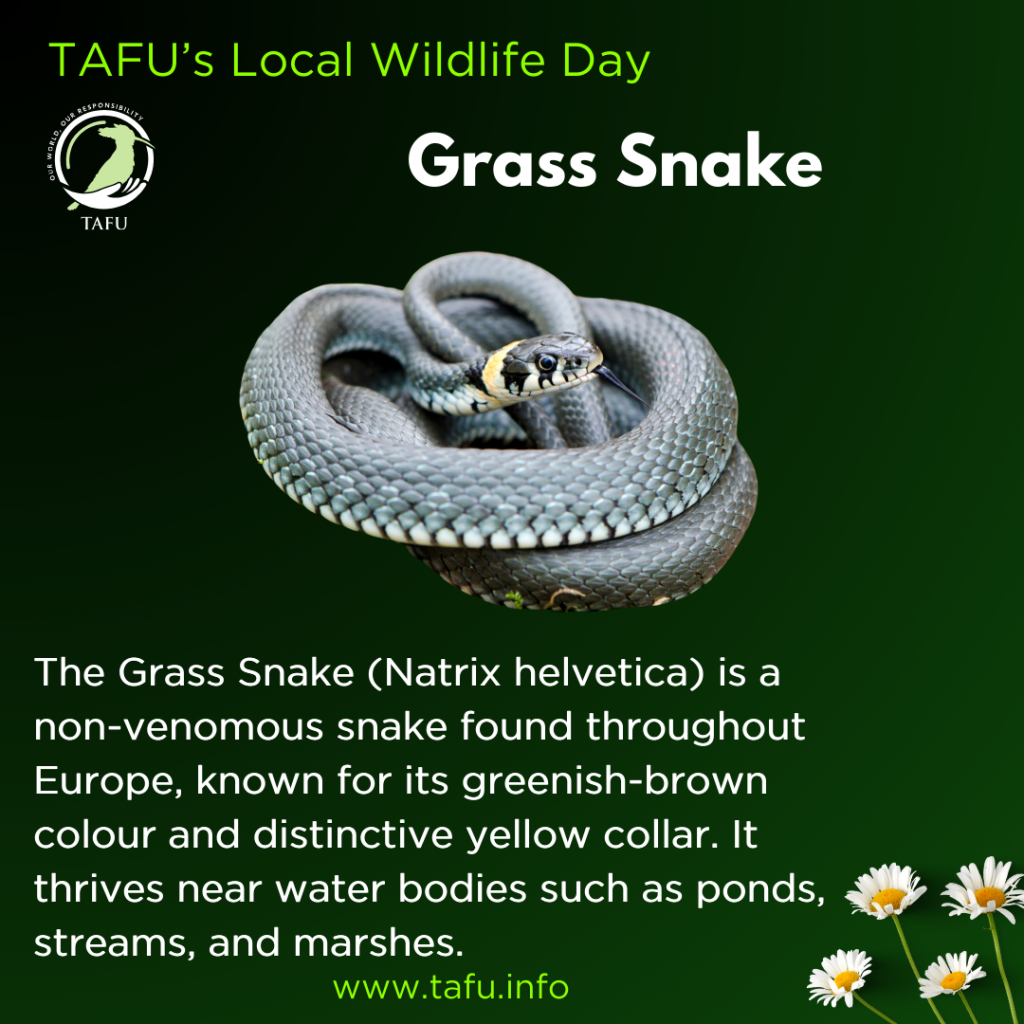Grass Snake
As part of the countdown to TAFU’s Local Wildlife Day on the 11th of July – Species no. 17.
Stay tuned – 26 more days and 26 more species until then!
The Grass Snake (Natrix helvetica), also known as the barred grass snake, is a non-venomous reptile native to Europe, including our UK midlands gardens. They can grow over a meter long and are typically greenish-brown with a characteristic yellow or whitish collar behind the head, and dark markings along the body. Grass Snakes are often found in habitats close to water, such as ponds, streams, marshes, and damp meadows, where they hunt for their primary prey, amphibians like frogs and toads.
Grass Snakes are excellent swimmers and can often be seen basking in the sun to regulate their body temperature. They hibernate during the winter months, usually from October to April, often seeking refuge in compost heaps, rotting vegetation, or burrows that provide a stable environment. The mating season occurs in the spring, with females laying eggs in warm, decomposing organic matter, which helps incubate the eggs. The eggs hatch after about 10 weeks, and the young are immediately independent.
These snakes are harmless to humans and rely on defensive behaviours such as playing dead or emitting a foul-smelling substance when threatened. Their presence is beneficial as they help control amphibian populations. To support Grass Snakes, we can all maintain garden ponds and compost heaps, avoid using pesticides, and ensure there are safe, undisturbed areas for them to hibernate and lay eggs.

